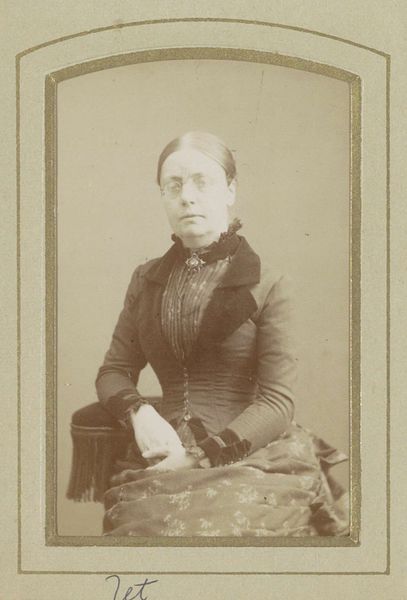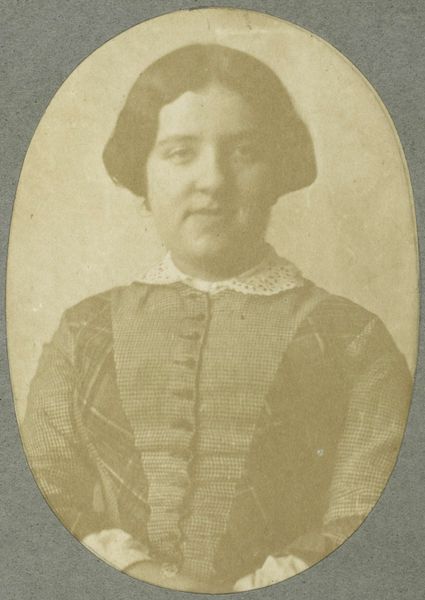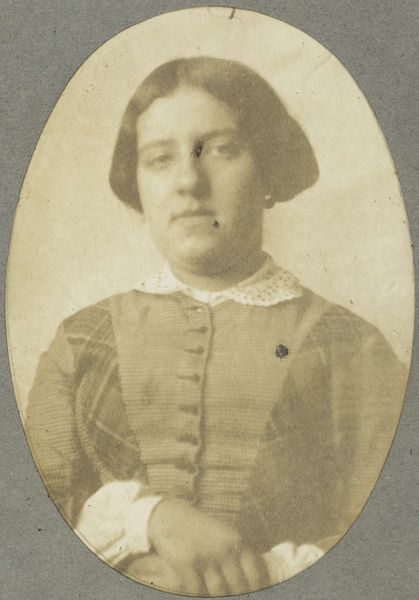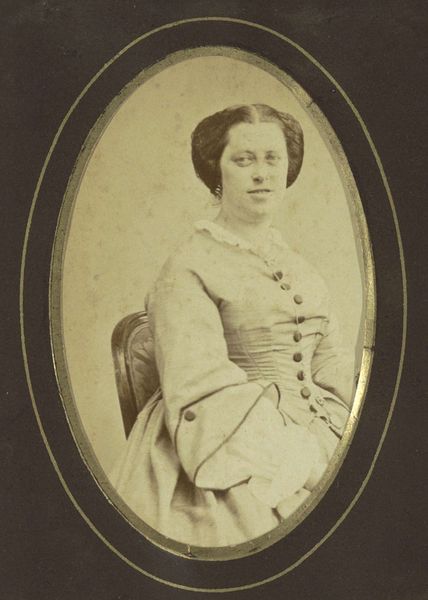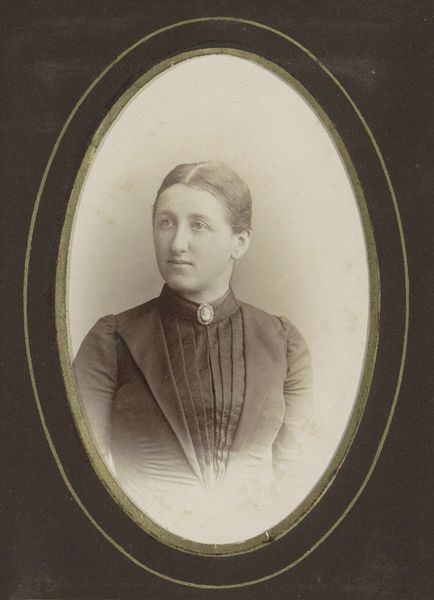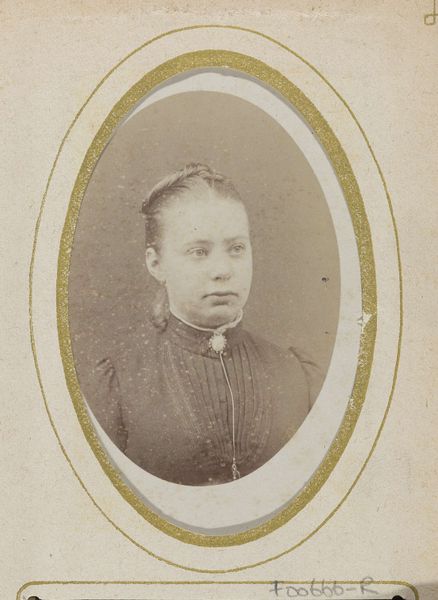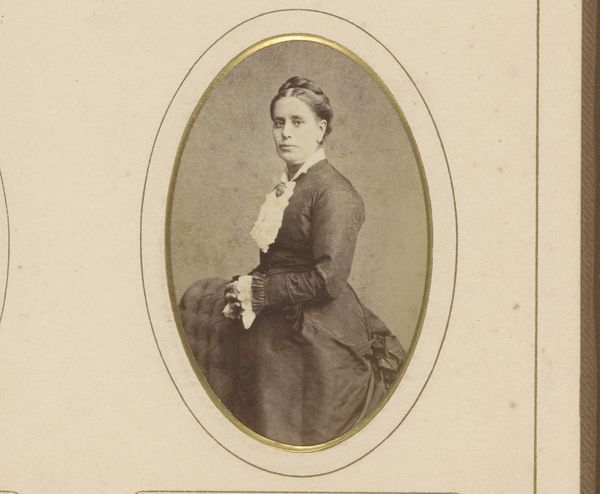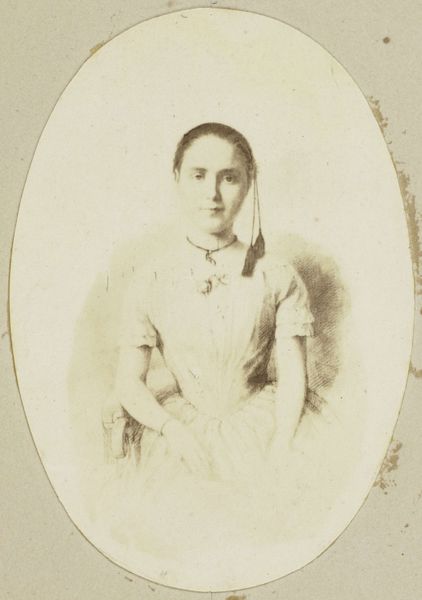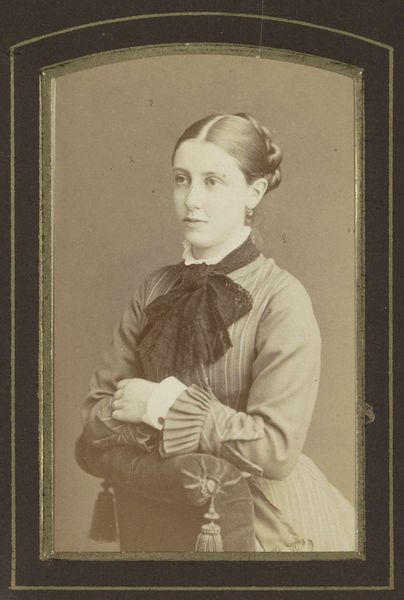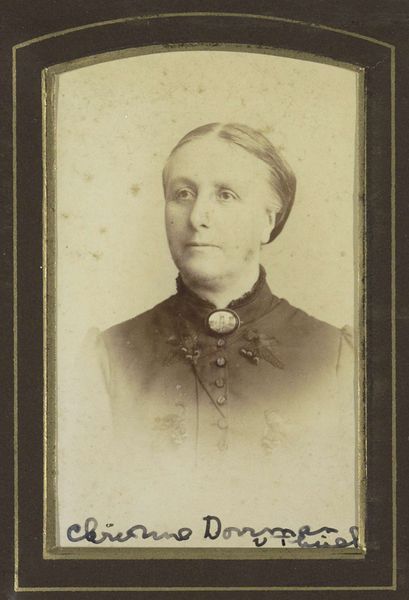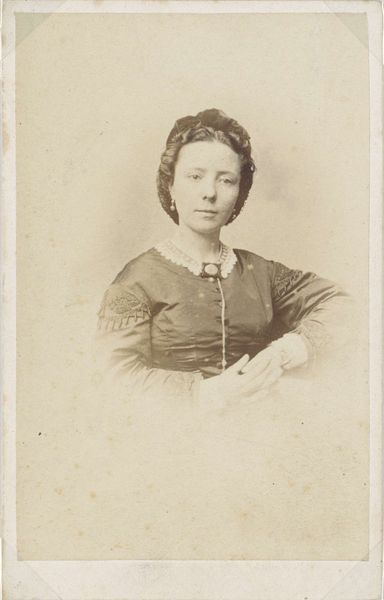
Dimensions: height 99 mm, width 64 mm
Copyright: Rijks Museum: Open Domain
This portrait of a standing woman was made with photography, sometime in the late nineteenth or early twentieth century. Photography transformed portraiture. Before its invention, images of people were reserved for the wealthy, who could afford the labor of a painter. Photography offered an efficient process that democratized image-making, placing it within reach of the middle class. While the process was much faster, it was still labor-intensive, as each print needed to be developed using a variety of chemical solutions. The sepia tone we see here is in part the result of the developing process, but also because these tones were considered more artistic. While photography seemed to offer a direct representation of reality, it was actually a carefully constructed performance, as the subject was posed and styled. Looking at this image, it's important to consider photography not just as a means of documentation, but as a new form of making that reshaped society's relationship to labor, art, and representation.
Comments
No comments
Be the first to comment and join the conversation on the ultimate creative platform.
